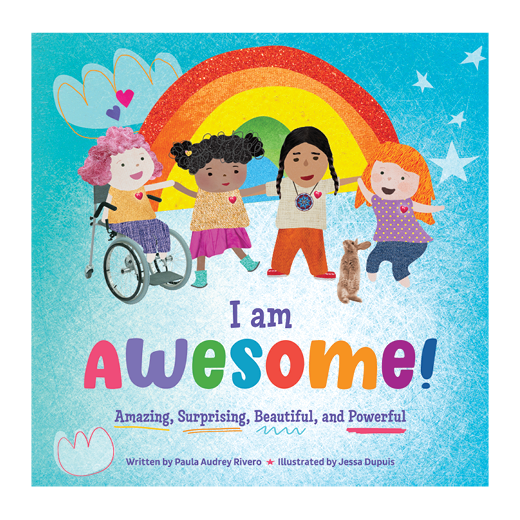6 Things Disabled People Need You to Stop Doing: Access Edition
Image description: A busy intersection road in a large urban center. A yellow taxi is stopped while pedestrians cross the street.
When thinking about how to help, assist, or be of service to disabled people, it’s not always about what you can do—instead, there may be barriers and behaviors in the environment that work against disabled people in your community that you can change or stop once you notice.
In this blog, we cover a number of different things in our environment that can influence a disabled person’s access.
Leaving E-Scooters in the Middle of Sidewalks
Image description: An electric scooter, or e-scooter, is parked along a sidewalk.
Rentable e-scooters are growing in popularity across many cities, celebrated for their cheap rental rates and ‘green’ focus on electric-powered mobility.
However, it is unfortunately common for people, once at their final destination, to end their ride and leave the e-scooter standing in the middle of sidewalks, at the tops or bottoms of stairwells, or even in the middle of public use ramps. This is especially exacerbated when, whether from careless placement or heavy weather, the e-scooter tips over, taking up even more space.
Some e-scooter companies such as Bolt require you to take a picture of the e-scooter before your ride can end, and will issue warnings, fines, or revoke use of the app if the e-scooter is parked incorrectly.
Take more notice in the environment around you, whether it’s your own e-scooter or another left alone—park your own and/or move other e-scooters and e-bikes out of the way to keep roadways clear for everyone.
Parking in Disabled Parking Lots
Image description: A sign with a blue disability symbol. The sign reads that parking is allowed by disabled permit only, with a minimum $250 fine if disobeyed.
In 2018, disabled science fiction writer Jennifer Lee Rossman gained social media virality when replying to a twitter user’s opinion that disabled parking spaces should only be valid during Monday to Friday business hours.
Such opinions (rightfully called out by Jennifer) are not only flippant and careless, but perpetuate an ableist belief that disabled people do not, cannot, or should not participate or have access to community spaces and engage in public life.
Disabled parking spaces not only offer closer access, but are often wider in size with painted islands to enable enough room for power doors and ramps to extend.
Do not park in disabled parking spots. If you find yourself in the space next to one, make sure your vehicle is still far away enough to allow doors to swing open and ramp access, should the passenger need it.
And most of all—do not ask a disabled person to justify or explain how they have a disabled driving placard in their car. Not all disabilities are visible.
Only Allowing Disabled Buses to Park in Specific Areas
Anecdotal experience from our Communications Director, Deanna:
“In 2018, I was invited by my colleague to pilot the very first Inclusion Team of an outdoor theatre festival. In short, the purpose of this team was to help volunteers and performers, who consented to assistance, ways to make their experience on site as comfortable and fun as possible.”
“One of the most common complaints coming from Volunteer Team Leaders was that disabled volunteers, specifically those with mobility devices, were perpetually late—which then became a reason to try to dismiss the person from the team. When investigating this, I discovered that because the festival operated in an older part of the city with narrow roadways, pick-up/drop-off areas for disabled transport vehicles were located severely out of the way.”
Where most volunteers might park a car, lock a bike, or take the bus, disabled volunteers who required different transport options were dropped well beyond the edges of the festival site.
“and tasked with navigating wheelchairs, power chairs and other mobility aids across inconsistent curbs and walkways for several blocks with busy crowds, in the hot summer weather.”
It is an unfortunate sign of poor planning to designate disabled parking and shuttle drop-offs in long distances away from main entrances. When thinking of disabled seating, parking, and access needs, plan for their entrance needs to be as accessible as anyone else’s.
Not having a Detailed Menu on Your Restaurant Website
Image description: A person reads a restaurant menu.
The key word here is ‘detailed’.
Many of us like to browse a restaurant website when deciding where to eat out, or what to order to get delivered in. To some, it’s an enjoyable experience to read every single menu item and plan out a whole meal.
To some with food sensitivities, sensory aversions, or other assisted methods of feeding, a lack of menu descriptions can—in some cases literally—be a life or death gamble.
Without proper menu descriptions online, disabled patrons may find themselves having to take the risk to either show up and be disappointed once flipping through a physical menu—or order an item delivered anyway, only to put it aside for someone else or dispose it entirely. You might find yourself combing through Google reviews and photos, hoping that some other past customer can tell the story for you.
When designing your menus, including not just allergy and dietary info but also photos can go a long way.
Claim to be Accessible but Only Have a Ramp at the Front Door (or no ramp at all)
Image description: A large exit sign in a parking lot.
This one, unfortunately, is more common than you think.
To many, ‘accessibility’ is nothing more than ramp access, as if disability is only based on ambulatory mobility. Even for those who have a permanent or temporary ramp, this speaks nothing to what the interior is like, the sounds and smells, what amenities are available in the bathroom, and how staff can support patrons.
Here are some considerations for increasing accessibility in businesses:
Front door ramp access (permanent ramp or temporary ramp that can be deployed safely)
A physical location that is easy for transport to pick up and drop off
Ramp (or fully flat, with no steps or rises) access to bathrooms and other parts of the restaurant
Wide doorways and hallways
Lighting; if indoor lighting can be adjusted as needed
Sound; if sounds such as restaurant music can be lowered in volume, or if quiet tables in the venue are available
Larger font menus, braille menus, menus that are easier to read with good color contrasting, simple fonts
Wide spaces between tables and hallways, for easier wheelchair and power chair navigation around the area
Wide and armrest-free seating options for different body types
Accessible washrooms (eg. Grab bars, slip resistant flooring)
Lounge or sitting areas in the bathroom to allow space for medical use, nursing, sensory regulation etc
Distance away from large appliances such as freezers and washers (eg. avoid constant, ambient electrical noises and vibrations)
Option for private tables or tables with wall partitions or covers, to reduce the sensory load of other patrons in the area
Having Sensory Friendly Hours at Limited Times
Over the past few years, grocery chains and other stores have begun implementing ‘sensory friendly’ shopping hours.
During these hours, store lights may be dimmed, music and announcements may either be turned off or lowered in volume, staff may speak quieter, and staff might skip out on loud tasks like corralling carts.
The issue is when when sensory friendly hours are only offered once a week, for a couple hours at a time, within opening and closing periods, or a combination of the above.
If a family genuinely benefits from sensory friendly hours, but those hours are only once a week, families may find themselves having to plan their lives and schedules around these very specific time slots, rather than the ease of entering a store any time of the day.
Especially when time slots are only at very early or late times (eg. First hour of opening, last hour before closing, during weekdays), disabled customers are still pushed to the edges of public participation in their communities.
Access for Everyone
Image description: Wheelchair users rest at a quiet train platform with a few other patrons walking nearby.
We hope this was an informative introduction to problematic aspects that, to those who are not disabled, may not have noticed or realized were challenges, constraints and barriers to others in your community.
Looking to make the environment around you more accessible is just one of many different elements to broader accessibility for everyone.
Resources and References:
Man in wheelchair making Edmonton accessible one bar at a time - Global News
Calgary teen in wheelchair upset over obstacles at the movie theatre - Global News
disABILITY Accessible by Design - Consulting Agency













